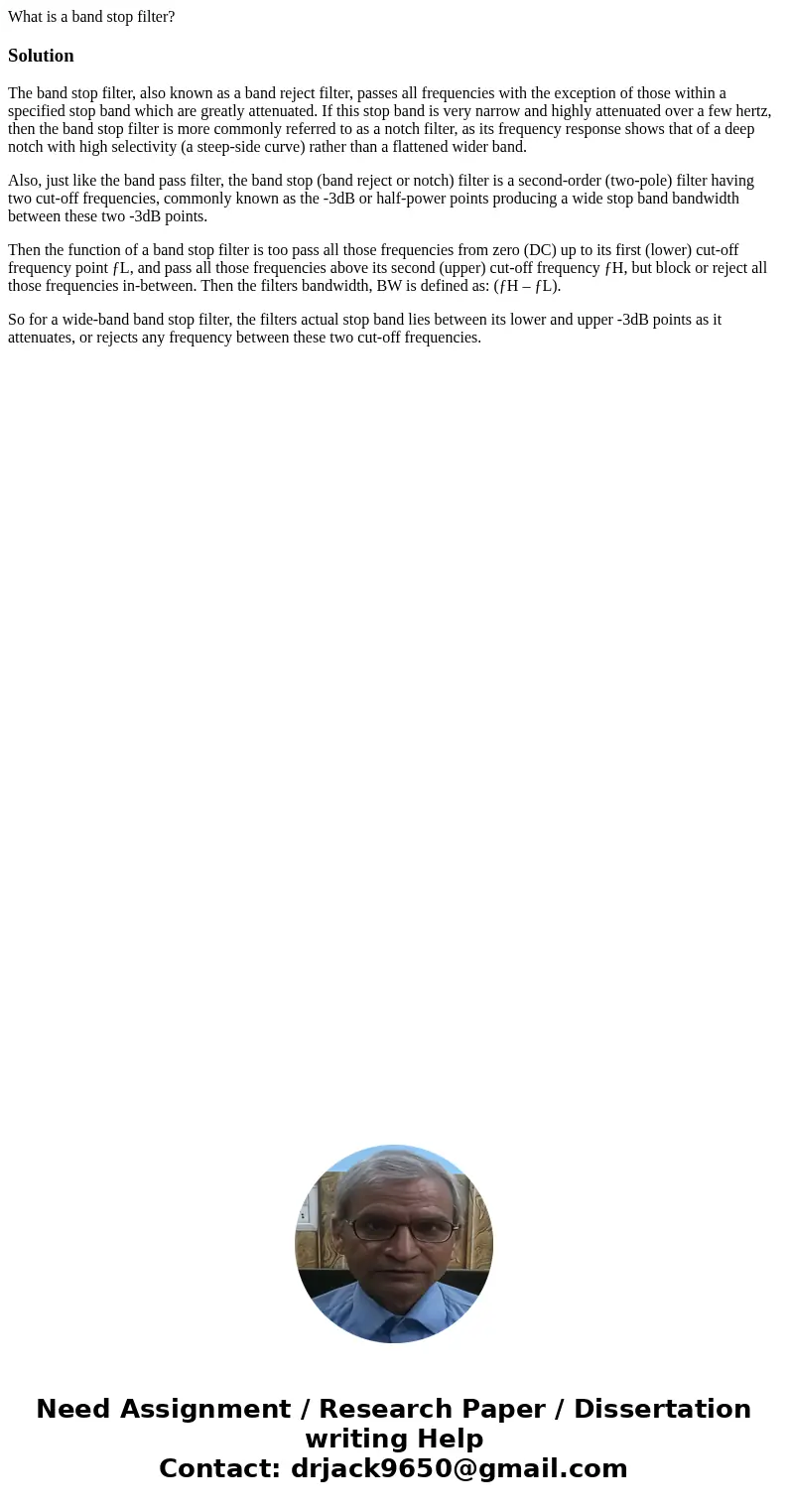What is a band stop filterSolutionThe band stop filter also
What is a band stop filter?
Solution
The band stop filter, also known as a band reject filter, passes all frequencies with the exception of those within a specified stop band which are greatly attenuated. If this stop band is very narrow and highly attenuated over a few hertz, then the band stop filter is more commonly referred to as a notch filter, as its frequency response shows that of a deep notch with high selectivity (a steep-side curve) rather than a flattened wider band.
Also, just like the band pass filter, the band stop (band reject or notch) filter is a second-order (two-pole) filter having two cut-off frequencies, commonly known as the -3dB or half-power points producing a wide stop band bandwidth between these two -3dB points.
Then the function of a band stop filter is too pass all those frequencies from zero (DC) up to its first (lower) cut-off frequency point ƒL, and pass all those frequencies above its second (upper) cut-off frequency ƒH, but block or reject all those frequencies in-between. Then the filters bandwidth, BW is defined as: (ƒH – ƒL).
So for a wide-band band stop filter, the filters actual stop band lies between its lower and upper -3dB points as it attenuates, or rejects any frequency between these two cut-off frequencies.

 Homework Sourse
Homework Sourse